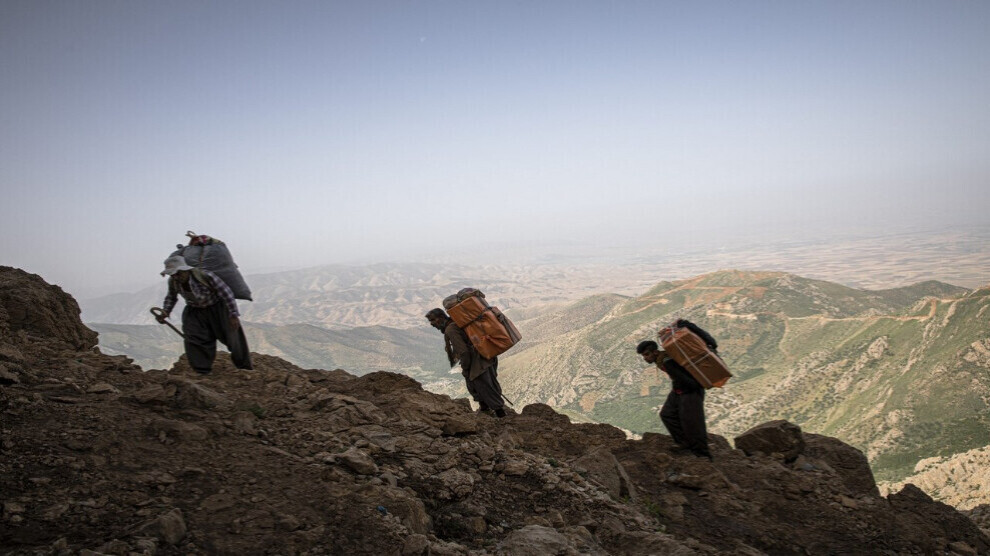Another kolbar killed by Iranian regime forces in East Kurdistan
Apart from systematic attacks directed against them, kolbars are struggling to make a living under harsh weather conditions, dangerous geographical locations and mines.
Apart from systematic attacks directed against them, kolbars are struggling to make a living under harsh weather conditions, dangerous geographical locations and mines.

According to the reports of local media in East Kurdistan (Rojhilat), Iranian forces fired at a group of kolbars in Nawsoud. A kolbar named Eta Hussein was wounded in the attack. After 9 days of treatment, Eta Hüseyin lost his life yesterday evening.
The tragedy of the kolbars
Eastern Kurdistan has descended deeper into poverty through the years due to deliberate policies by the Iranian regime and stands out as one of the poorest regions in Iran. Compared to other regions, the area has seen significantly less investment and development has been deliberately curbed. Agriculture and industry weren’t allowed to develop, and as a result, unemployment rose to the highest in Iran.
Faced with policies of discrimination, oppression and impoverishment, carrying smuggled goods is not a choice but a must for survival.
Kolbar comes from the Kurdish words, “kol” (back) and “bar” (load). Kolbars make their living carrying loads along the perilous borderline. Their loads include cigarettes, mobile phones, clothes, housewares, tea and seldomly alcohol. They walk through dangerous terrain to continue this trade between Southern and Eastern Kurdistan. The goods they bring are sold at high prices in Tehran, but the kolbars who risk their lives for them are paid very modestly.
The intermediaries who take the deliveries and find buyers in cities are called kasibkars.
Kolbars and kasibkars range from 13 to 70 years old. Some only finished elementary school, while others are university graduates. They carry loads, because they can’t find any other employment. In the last 5 years, some 300 kolbars and kasibkars were killed in cold blood. There are no absolute statistics available for the deaths.